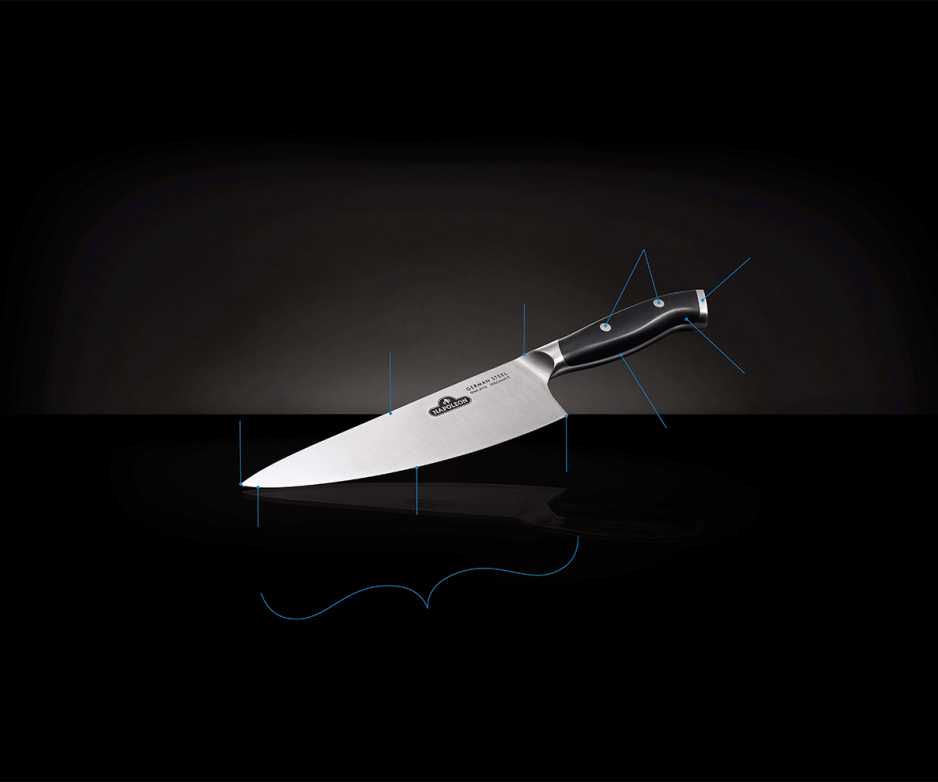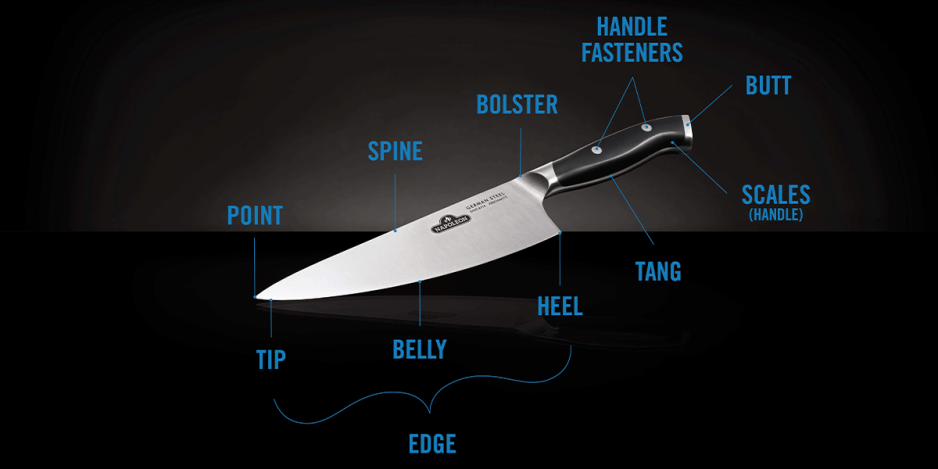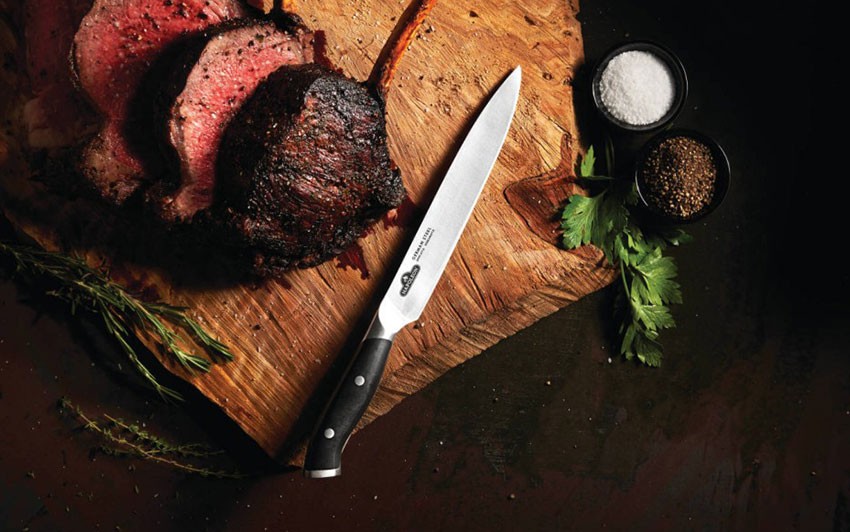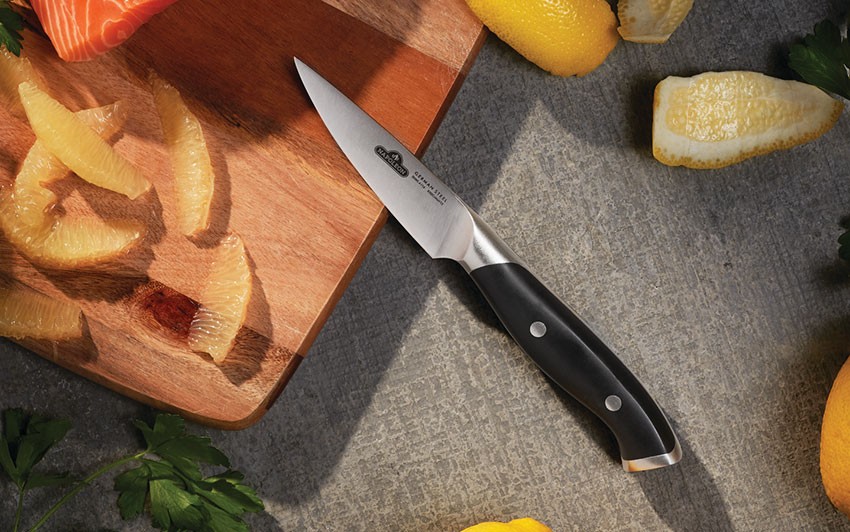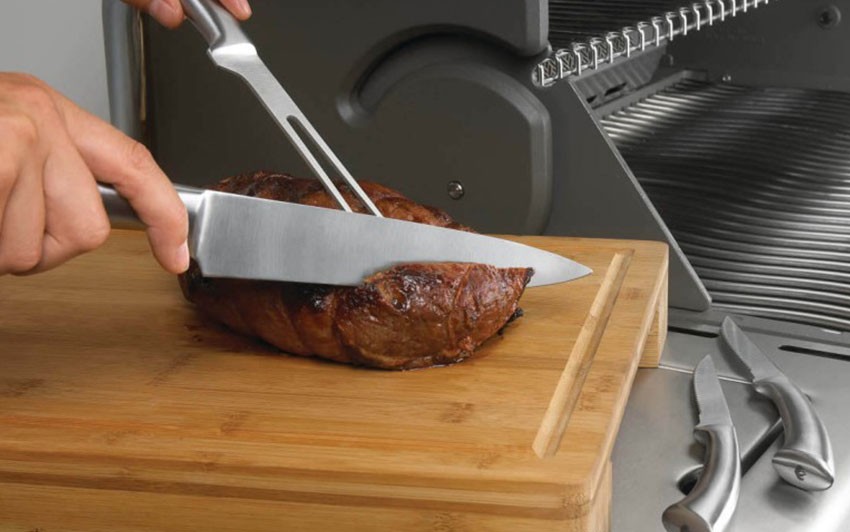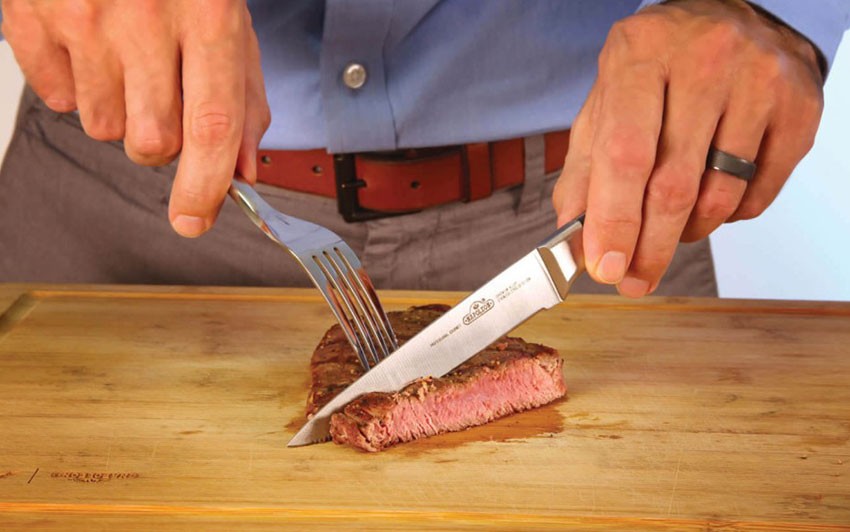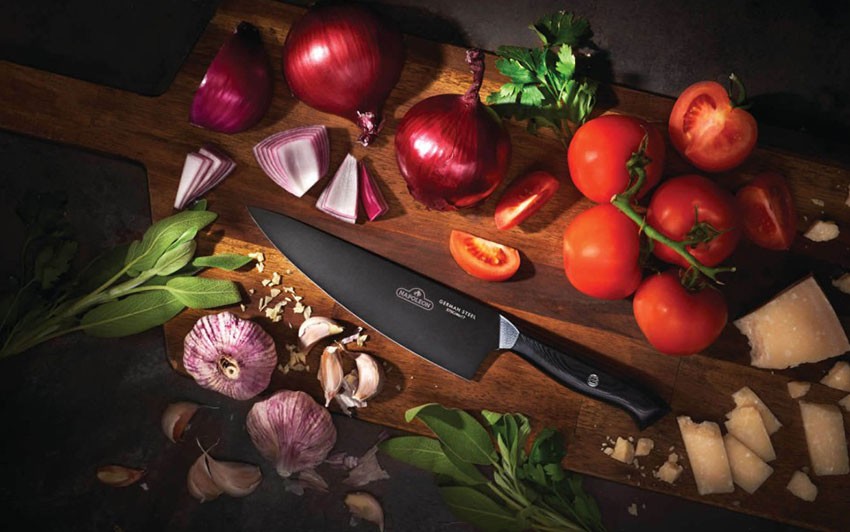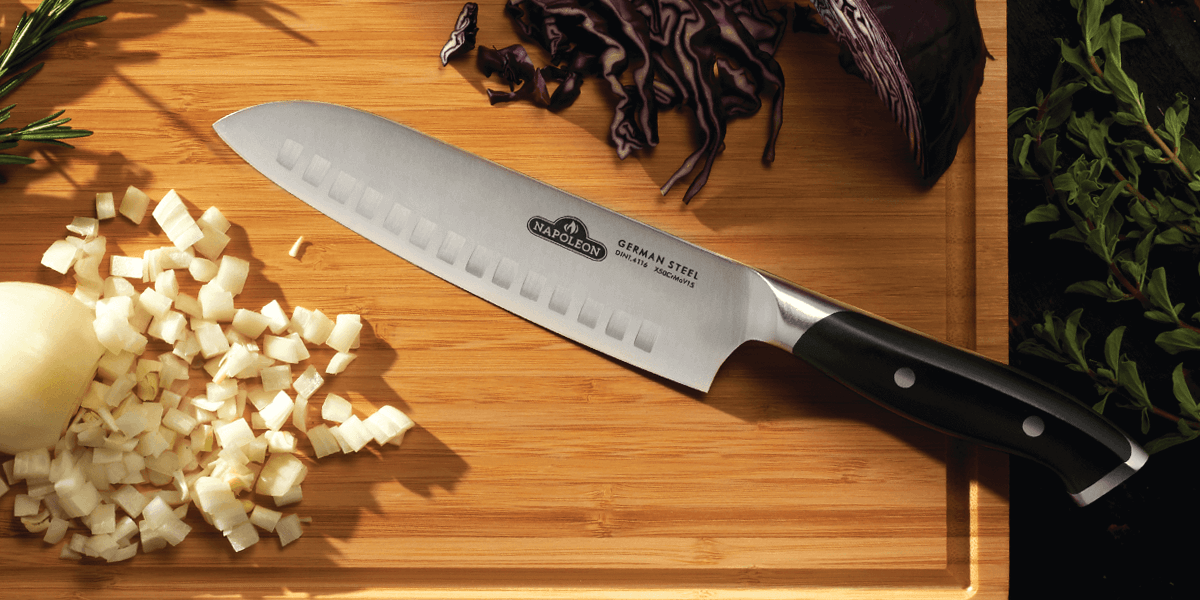
Know Your Knives - Anatomy of a Knife
Selecting the perfect knife for your needs is integral for those who like to spend time in the kitchen or in front of the barbecue. We’ve reviewed the materials, different construction methods, balance, and even what each kind of knife specializes in. But to truly know your knives, you need to know the anatomy and the different parts of a knife. This terminology will help you discuss your needs with a professional and ensure you have what you need when selecting the perfect knife.
The Parts of a Knife
Each area of every knife is unique and has its own function. Knowing the different areas and what they are for is integral to knowing what you need in the perfect knife and which knife is suitable for the job you are doing.
The Edge
The sharpened section of your knife, the edge, also known as the belly, runs the length of your knife and contains three sections: the point, the tip and the heel.
The Point
The point is the furthest part of the knife from the butt or pommel. It is not the tip; however, the point indicates how the knife is used. It is the place where the spine and the sharpened blade itself meet. There are a number of different types of point seen on knives in the kitchen.
A chef’s knife features an upswept point that curves the blade allowing the chef to use a rocking motion while chopping. A chef uses this knife by starting the movement at the tip and bringing the knife down to the food in a rolling motion towards the heel of the blade. It is an efficient way to chop when well practiced.
The Tip
The tip of the blade begins at the point and runs along the first third of the cutting edge. It’s used for slicing and cutting delicate things.
While all blades do have a tip not all tips are pointy. The santoku and the Serbian chef’s cleaver feature the sheepsfoot shape. Characterized by a drop-point, where the spine curves down to meet the tip of the blade, sheepsfoot style knives have a wider face and a straight edged blade. These shapes encourage precise up and down chopping motions which some chefs believe is more efficient. The wider face allows food to be scooped up onto the blade face to be moved to the dish being prepared.
The Heel
The heel is the part of the knife that sits just before then bolster and handle and is farthest from the tip. This is the part of the knife that is closest to your hand. The back side of the heel is unsharpened, providing a safety barrier of sorts before the blade starts. This part of your knife is used for faster and more rough cuts and times when more force or pressure is required. It is closest to your hand and more sturdy than the tip would be. Some blades have a wider heel than tip for added strength – in this case the heel would be thicker, and the blade would taper in thickness towards the tip. Other smaller knives, like paring knives and steak knives, won’t have much of a heel at all.
The Spine
The spine is the opposite, unsharpened side of the blade which is quite a bit thicker than the cutting edge. This is where you would place your hand when added force is needed, like getting through a turnip. The thickness of the spine will determine what sort of pressure a knife can take. A thicker spine means a stronger blade that is built for the tough jobs.
The Bolster
A knife’s bolster strengthens the place where the knife meets the handle. It is a guard for your fingers. A well-made blade will take your fingers into account so that you have a place to put them and add leverage to the knife when cutting.
The Tang
The tang is the part of the blade that extends into the handle of the knife. A full tang blade indicates that the metal that your knife is made from extends all the way through the handle. Full tang blades are the most stable and durable. Partial tang blades are less expensive, this is because there is a small extension of the knife that is slid into the handle and held in place by only a single rivet or by molding the handle directly around it.
The Handle
The handle of a knife can be made from a variety of materials. Handles cover the tang of the blade and is where your hand goes when you are holding and using a knife. This is also known as the scales when the handle is made of more than one piece held together by fasteners or rivets.
The Fasteners
The fasteners are usually rivets or screws that ensure that the handle holds tight onto the tang.
The Butt
The butt of the knife is also known as the pommel. This is the furthest you can get from the point of the knife. These are usually curved to provide an indication of how you should hold the knife – sharp side down. The weight of the butt of the knife can help to tell you what the knife should be used for. The heavier and thicker the back of a knife is great for chopping and harder foods. If the weight is moved away from the butter and into the handle, your knife would be ideal for finer techniques.
Did you Know that we Make Many Different Types of Knives?
See below for all the different types of top-quality Napoleon knives that you can add to your collection! As well, learn more about the materials a knife can be made from.
Chef's Knife
-
Razor-sharp German steel with excellent edge-retention
-
Full tang blade, dual riveted for solid performance
-
Precision edge glides through food without tearing
-
8" (20cm) all-purpose chef's knife with contour handle for superior grip and balance
-
Chop, dice, mince, and slice effortlessly
Carving Knife
-
Razor-sharp German steel with excellent edge-retention
-
Sleek precision edge glides through for thin precision slicing
-
Full tang blade, dual-riveted for solid performance
-
8" (20cm) carving knife with contour handle for superior grip and balance
Paring Knife
-
Razor-sharp German steel with excellent edge-retention
-
Full tang blade, dual-riveted for solid performance
-
Precision edge glides through food without tearing
-
3.5" (9cm) all-purpose paring knife with contour handle for superior grip and balance
-
Ideal for peeling fruits and vegetables and other detailed work
Santoku Knife
-
Razor-sharp German steel with excellent edge-retention
-
Full tang blade, dual-riveted for solid performance
-
Granton edge for effortless and efficient cutting
-
7" (18cm) all-purpose Santoku knife with contour handle for superior grip and balance
-
Refined blade for precision cutting
-
Chop, dice, mince and slice effortlessly
6-Piece Knife Set
-
Set contains four steak knives, one carving knife and one meat fork
-
Each piece of this set is well balanced, full stainless steel, which means no loose handles and they definitely won't fall apart when washed
-
The carving knife is a large, 13.5-inch blade that comes fully sharpened and ready to serve
-
The large 12.75-inch carving fork is well suited to hold steady and serve any food you make
-
The four 9.5-inch serrated steak knives will remain sharper longer than flat edged blades
-
The handles sport a smooth, rounded, ambi-ergo feel. They're perfect if you are right or left-handed
Steak Knife
-
Beautiful, large 5-inch stainless steel blade with riveted, polished rosewood handle looks as beautiful as it is functional
-
This knife features a full-length, stainless steel tang to create balance
-
Two different cutting edges have been honed onto this knife; the serrated edge allows the knife to grip and bite in, while the straight edge leaves a smooth, clean-cut face on whatever you're slicing
-
The PRO Steak Knife has already been beautifully sharpened so you're ready to slice right out of the box
-
The beautiful rosewood handle fits comfortably and smoothly into your hand
-
Not dishwasher safe, it is recommended to wash by hand to maintain the finish on the handle
Phantom Chef's Knife
-
This unique blade is made from titanium plated steel
-
Razor-sharp steel with excellent edge-retention
-
The full tang blade is dual-riveted in the handle for solid performance
-
The well honed edge glides through food without tearing
-
This 8" (20cm) all-purpose chef's knife features a contoured handle for superior grip and balance
-
Chop, dice, mince and slice effortlessly
